
Warruwi Fisheries &
Aquaculture Knowledge Partnership Project

Our Projects...
Yagbani Aboriginal Corporation is a partner organisation for the Warruwi Fisheries and Aquaculture Knowledge Project. The other partners for this project are: the Fisheries Research Development Corporation, the Northern Territory Government, and The Northern Institute and REIL at Charles Darwin University. Together we have all worked together to create some of the materials below.

Warruwi Seasonal Chart
Warruwi Season's Chart was originally authored and designed by senior knowledgable elders Rosemary Gurrunama, May Mayayanga, Ralph Gumurdul and Maggie Magalgala in the 1980s as part of the school's bilingual program. We sought authorisation through YAC to use, adapt and digitise the original chart so that future generations can learn about their heritage and lanaguage.
The original season chart is now accessible in a digital format for YAC to communicate to the Warruwi community, the school, and anyone seeking to understand Arrakpi people, culture and languages. The purpose of developing an electronic version of the chart is to allow the Maung language to be shared, and to describe key fisheries and aquaculture species which are important sources of healthy food for the community and which present business opportunities for the local economy.
The school is the teaching and learning hub on Goulburn Island. Their curriculum includes VET programs about fisheries and aquaculture, and what this can offer to the community. The students attending the Warruwi primary and high schools also learn how to understand their marine environment and how to continue to look after their saltwater country. For example, a good time to eat the healthy clams, mussells, and oysters is July-August. Good food from country keeps us healthy: healthy people, healthy country!
AIATSIS presentation
The Australian Institute of Aboriginal and Torres Strait Islander Studies sponsored 6 Arrakpi from Warruwi to attend their National Indigenous Studies Conference, '50 Years On', which was held in Canberra in March 2014 to present on the research project. At the conference, Arrakpi representatives from Warruwi talked about their aspirations for fishing and aquaculture economic development, Yagbani's role and Arrakpi culture, language and performance and what has been achieved so far.
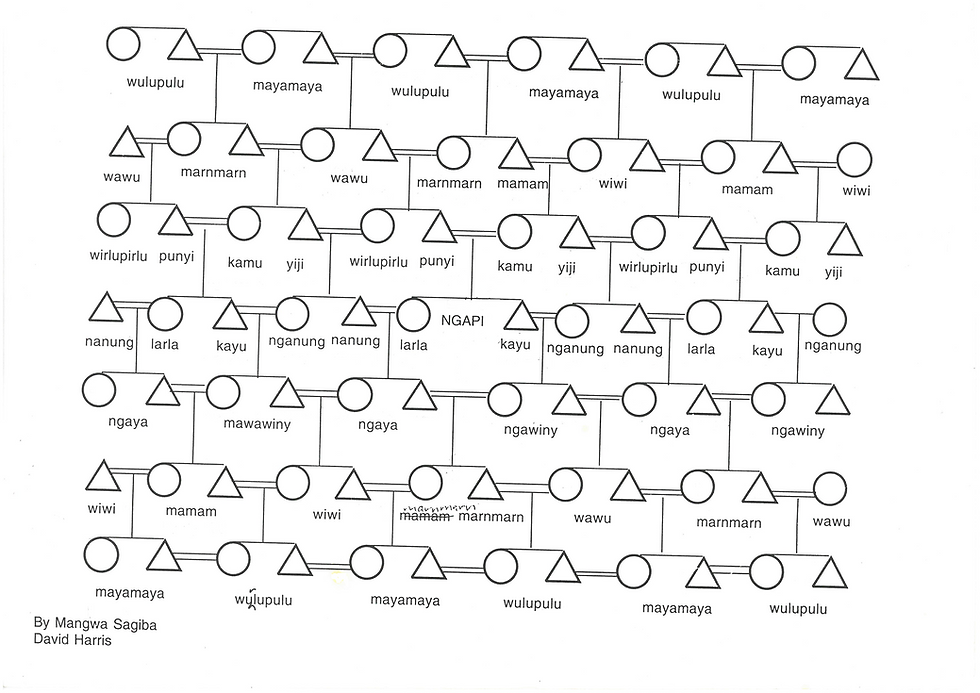
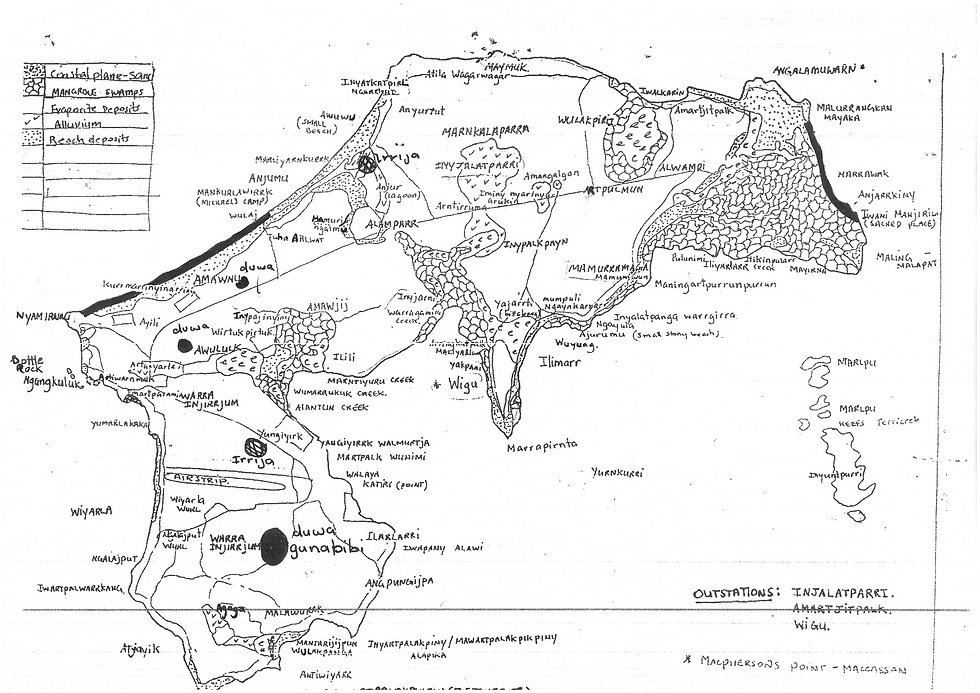
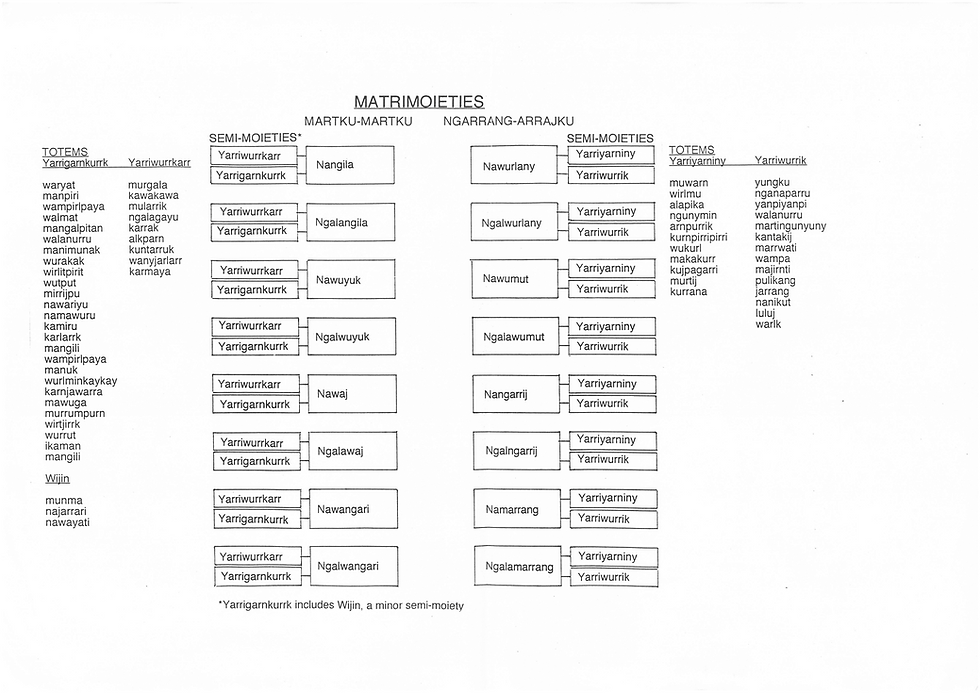
Old materials from the School:
Here are a few materials which we found, believed to have been produced by the School as part of the bilingual program in the past. Click on the images to the left, to see a diagram showing Maung kinship terms, a map of Warruwi with places named in Maung, and a basic representation of the skin system. Thanks to Yagbani Aboriginal Corporation and the Arrakpi people of Warruwi for giving permission for these to be reproduced on the website.
Low tide reveals classroom - NT style
Check out an article on the VET training in aquaculture from CDU's Origins magazine (Edition 1/2014)
Clam project update
Read a bit about the Giant Clam work being done at Warruwi. The article is reproduced from the Indigenous Science Network Bulliten - click here to go to the original website.
Oyster heavy metals research
The Warruwi community has partnered with scientists from the Darwin Aquaculture Centre and Charles Darwin University to explore the viability of commercial harvesting of milky and blacklip oysters. Initial tests in 2011 indicated that levels of cadmium in local oysters may exceed food standards. Further testing in 2012-2013 found that oysters from some sites were within food standard limits, whilst others were not. This document (click on the icon to the left), drawn from the research’s final report, contains more details on the project and its findings. For further information, please contact Dr. Ann Fleming at the Darwin Aquaculture Centre (ph: 08 89244268 / email: AnnE.Fleming@nt.gov. au)
Background document on oyster farming
This is a document which explains the history of oyster farming in Australia, and at Warruwi. It was prepared by Ann Fleming, the Research Manager at the Darwin Aquaculture Center.
NCCARF Report
Read the report from an earlier stage of research which looked at what the women at Warruwi thought about aquaculture and climate change:
Petheram, L, Fleming, A, Stacey, N & Perry, A. (2013). Indigenous women’s preferences for climate change adaptation and aquaculture development to build capacity in the Northern Territory. National Climate Change Adaptation Research Facility, Gold Coast.


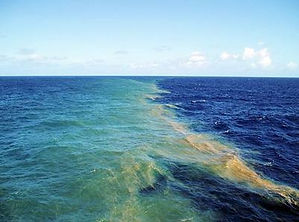
Detecting algal blooms near Goulburn Island from space
A bird's eye view of the coastal waters off West Arnhem Land captured by a satellite from 700 km above the earth at the end of the dry season (September). The lighter, white areas on the top image are sediment loaded waters, stirred up by the south-easterly dry season winds and the tides, as seen in the Van Diemen Gulf and around Melville Island.
A software algorithm has been applied to the top image to create the second image in which algal blooms (appearing orange) are seen close to the Goulburn Islands and further offshore. These blooms are likely to be Trichodesmium sp. or “Sea sawdust”. Often identified by their yellow-brown trails on the ocean’s surface, these blooms seem to mostly occur between July and November. The bloom off Melville Island extending all the way to Cobourg Peninsula is more than 300 km long, while those close to the Goulburn Islands are much smaller (10 km long). The third image shows what a Trichodesmium bloom looks like from a boat. Click on each image to see them in more detail.
Being part of the annual cycle of seasons, these Trichodesmium blooms are likely non-toxic but may affect the eating qualities of local seafood (see 'Oyster heavy metals research', above).
These images are courtesy of Dr David Blondeau-Patissier, a NAMRA-RIEL post-doctoral research scientist, and Dr Stefan Maier, group leader of the Remote Sensing Group at the Research Institute for the Environment and Livelihoods (RIEL), Charles Darwin University. Credits: European Space Agency (satellite image) / BEAM (software) / NAMRA (funding).

Maung and Iwaidja bilingual posters
Bruce Birch and Sabine Hoeng have been working at Warruwi and Minjilang (Croker Island) for many years, documenting the Maung and Iwaidja languages. Maung is the language traditionally spoken in the Warruwi/Goulburn Island region, and Iwaidja is that spoken in the Minjilang/Croker Island region.
Here are some posters they developed on the Marung and Iwaidja names for fish and sea shells. Check out their amazing website for more information on the Iwaidja language: http://www.iwaidja.org
Mawng Phrase Book App Coming Soon!
We’re excited to announce the imminent publication of a new ‘tap and play’ audio Phrase Book App for mobiles and tablets. The app, which is bilingual (Mawng-English), not only includes useful marine terminology, but functions as a handy learner’s tool for non-Mawng speakers living or working on Warruwi, Croker or other places where Mawng is spoken. As well as containing phrases in areas such as Conversation; Weather and Seasons; Health and the Body; Cooking and Eating, and much more, the ‘My Phrases’ section of the app allows users to add their own phrases and terms, using their mobile devices as recording devices. Click on the link to see the the full text of the phrase book (no audio).
Funding for the Phrase Book comes from the Fisheries Research Development Corporation (Project No. 2010-205: Warruwi Fisheries and Aquaculture Knowledge Partnership Project) and represents a collaboration between Linda Ford (Senior Researcher), Ann Fleming (Principal Scientist), the Yagbani Corporation and the Warruwi Community, as well as the Northern Institute at CDU and the Indigenous Languages Support Program (Linguist and Language Technologist Bruce Birch).
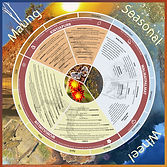
And something more...
Here is a newspaper article showing the trepang processing facility that has been started at Groote Eylandt. This is one option for developing the trepang business at Warruwi.
And here is an article on Tasmania Seafoods, who are the commercial licence holder for wild harvest trepang in the Northern Territory.
And check out another version of a seasonal calendar at the Bureau of Meterology website: http://www.bom.gov.au/iwk/maung/index.shtml